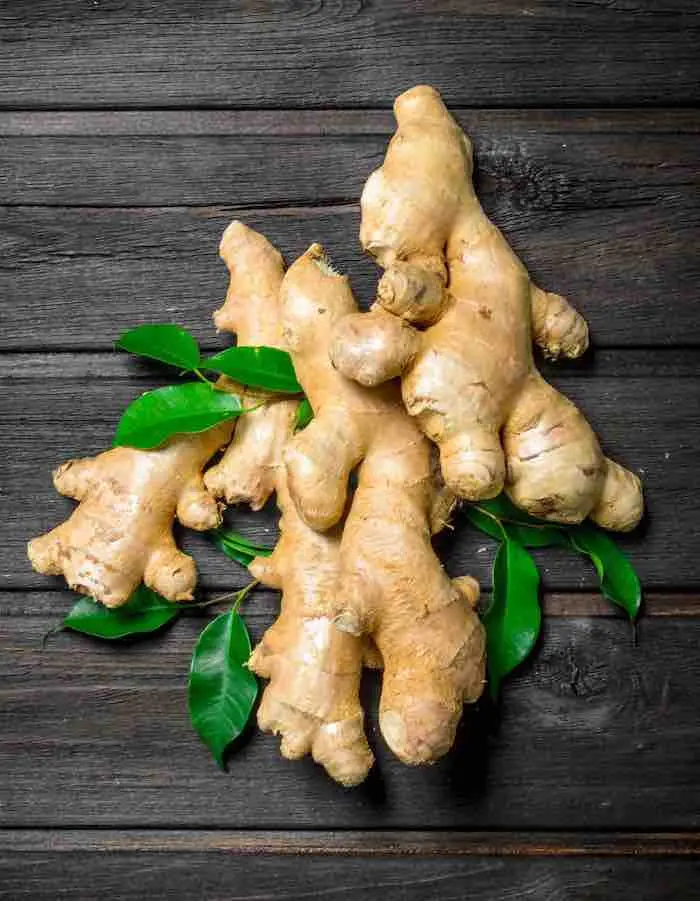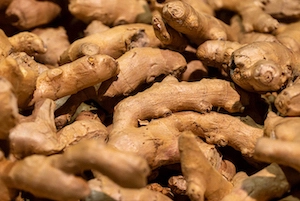Table of contents
How to Grow Ginger in Australia
Ginger growing is a great way to keep up supplies of this amazing herb, which is part of the same family as turmeric, cardamom and galangal. The ginger plant is native to South East Asia, where people have used it for centuries.
Growing ginger (Zingiber officinale) isn’t difficult, but it does require some knowledge and effort to ensure the best results. With a few essential tips and tricks, you can successfully grow flavourful ginger with high yields in your own garden. Learn how to plant, care for and harvest your own ginger here.

Ginger Growing: Choose the Right Variety.
Choosing the right ginger variety for your climate and growing needs is an essential part of successful ginger planting. There are several different varieties of ginger available, each with its own flavour profile and harvesting time.
Different regions may have access to different varieties, so do some research to find out which type might work best for you. Once you’ve chosen the best variety for your needs, you can be sure that you’re well on your way to successfully harvesting high quality ginger from your own garden!
Ginger Varieties
Culinary Varieties:
- Common Ginger (Zingiber officinale): This is the most widely known and used variety in cooking and medicinal preparations. It has a pungent, spicy flavor and is commonly found in grocery stores.
- Baby Ginger: Also known as young ginger, this variety has a milder flavor and tender, less fibrous rhizomes. It is often used in pickles, salads, and for making candied ginger.
Ornamental Varieties:
- Red Ginger (Alpinia purpurata): This ornamental variety is known for its striking red bracts and attractive flowers. It is often grown in tropical and subtropical gardens for its aesthetic appeal.
- Pink Ginger (Alpinia zerumbet): Also known as Shell Ginger, it features beautiful pink flowers and variegated leaves. It is often grown for ornamental purposes.
- Blue Ginger (Dichorisandra thyrsiflora): Although not a true ginger, this plant is called blue ginger due to its appearance. It has vibrant blue flowers and is used for ornamental purposes.
Other Notable Varieties:
- Chinese Ginger (Zingiber officinale var. officinale): This variety is commonly used in traditional Chinese medicine and cuisine. It has a strong, spicy flavor and is often used in soups, teas, and stir-fries.
- White Ginger (Hedychium coronarium): Known as Butterfly Ginger, this variety has fragrant white flowers and is often grown as an ornamental plant.
- Black Ginger (Kaempferia parviflora): Also known as Thai ginseng, this variety has dark-colored rhizomes and is used in traditional medicine for its potential health benefits.
Each of these ginger varieties has unique characteristics and uses, ranging from culinary applications to ornamental gardening and traditional medicine. Whether you are growing ginger for its spicy rhizomes or its attractive flowers, there is a variety to suit your needs.
Ginger Growing from Rhizome
Growing from a bulb or rhizome is an easy way to get started.
Ginger takes 9 months to grow from planting to when your rhizome are ready to harvest.
How to grow ginger in water
Growing ginger in water is an interesting method, though it’s typically grown in soil. However, you can start the sprouting process in water before transferring it to soil.
- Select Fresh Ginger: Choose a healthy ginger rhizome with firm, plump sections and visible “eyes” or growth buds.
- Prepare the Ginger: If the ginger piece is large, you can cut it into smaller sections, ensuring each piece has at least one or two growth buds. Allow the cut sections to dry for a day to heal and reduce the risk of rot.
- Place Ginger in Water: Fill a shallow container or bowl with clean water. Place the ginger pieces in the water with the growth buds facing up. Ensure that only the bottom part of the ginger is submerged in water.
- Sprouting: Place the container on a sunny windowsill where it can receive indirect sunlight. Change the water every couple of days to keep it fresh and to prevent mold or bacterial growth. After a few weeks, you should see small roots and shoots starting to develop from the growth buds.
- Transplant to soil as per below.
Ginger Growing Season
Ginger can be grown in pots. The best growing temperature is around 25 – 30 C (75 – 85 F).
Here in the tropics we grow ginger all year around and enjoy great success.
How to Grow Ginger in Pots
Tropical downpours during the ‘wet season’ are not good for many herbs, so growing in a container or raised bed that will drain well is a real advantage.
We have a heavy clay soil that is hard in the dry season and does not drain well in the wet season. While it depends on your specific situation, here in the tropics we recommend growing herbs in a pot or a container bed.
Ginger Growing Stages
Time needed: 3 minutes.
How to propagate ginger.
- Sow: Plant your bulb or rhizome underground when the soil temperature is above 20C (68F).
- Water and Sun: Water after planting and water regularly thereafter. Plant in full sun if possible.
- Thin: Thin out your seedlings so there is at least 30cm (12in) between each seedling.
- Mulch: Mulch around your plants to deter pests and save water.
- Harvest: When the plant has blossomed, you know the rhizomes are mature enough to harvest. Dig up the entire plant and separate the rhizomes. You can use some to replant while the rest can be used for cooking.
Ginger Growing Conditions
Location and Soil
Ginger can be propagated from a piece of ginger or rhizome. Your ginger should be located in full sun, though partial sun in the afternoon is tolerated.
Fertilising
Ginger does not need a lot of fertilising. However, you can apply a low-nitrogen fertiliser in spring.
Watering
Ginger does not like dry or soggy soil, so try to keep it just evenly moist, with frequent light watering.
Pests and Diseases
Ginger is fairly pest resistant, but pests include thrips, lesion nematodes and white grubs.
Neem oil is also a great organic way to keep pests at bay.
Harvest Your Ginger Roots When Ready!
When your ginger plants are ready for harvest, you will see the tips of the leaves turn yellow and die back. This is a sign that your ginger roots have grown to their full size and it’s time to unearth them. Carefully dig around the base of the plant and gently pull out the ginger rhizomes.
Depending on your climate and soil type, this may take anywhere from 6-10 months for mature rhizomes. Cut off any dead or damaged parts before storing in a cool and dry place!

Ginger Uses
Ginger is a root commonly used as a spice in cooking. It also has many health benefits and can help aid digestion, reduce inflammation, treat nausea, and even boost immunity.
Cooking
Ginger can be used in so many ways in the kitchen and is an essential ingredient in many Asian cuisines. Fresh Ginger is great in stir-fries and curries.
Ginger tea can also be made using fresh or dried ginger root. Adding a little honey to the tea will sweeten the taste and help soothe sore throats and colds.
Health Benefits of Ginger Growing
There is research this herb may also help increase movement through the digestive tract, suggesting that it may relieve or prevent constipation.
Ginger also contains antioxidants that may help prevent or treat arthritis, inflammation, and some other types of infection.
Thank you for reading and good luck with your ginger growing.
Other Tropical Herbs
- Dill
- Grow Basil at Home
- Cilantro
- Garlic Chives
- Lemongrass
- Mint
- Stevia growing
- Thai Chili
- Vietnamese Mint Growing (laksa leaf)



Comments
One response to “Ginger Growing Guide”
[…] Ginger Growing […]